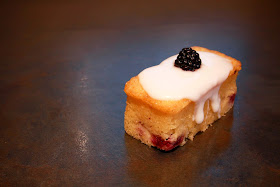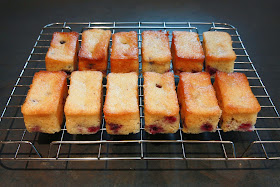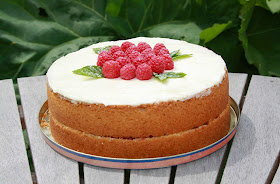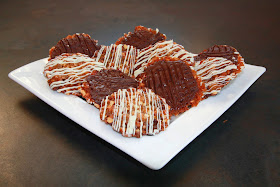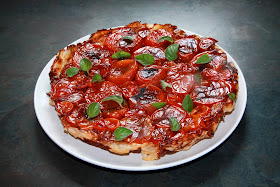In the quest for the perfect cake for my friend’s son’s
Mr Bump cake, this was my second attempt at Madeira cake (having made this lemon and raspberry Madeira cake and found it a little dry). The recipe is from Lindy’s Cakes and was recommended by several friends.
Having made a 5 egg monster cake that took forever to
bake, I adapted the recipe to a 4 egg recipe to bake in two 20cm sandwich tins,
to try and bring the baking time down.
If you are a bit of a perfectionist like me, you can
weigh the amount of cake mix that goes into each tin to ensure that both cakes
are an even size and take the same amount of time to cook.
As recommended previously, in order to produce beautifully
flat and evenly baked cakes, I use my magi-cake strips: these are an investment
but they make a huge difference! You soak them in water and then wrap them
around the cake tin: this adds an extra layer therefore prevents the edge of
the cake from cooking more quickly and drying out. It also prevents the cake
from doming and so ensures a nice even top to your cake.
These cakes turned out really well. I froze them so that
they could be carved into Mr Bump’s hands and feet later in the week and they
defrosted beautifully and kept really well – EHH was eating the off-cuts for over
a week after they had been defrosted! I made them with the two teaspoons of vanilla
extract and I think this added a nice depth of taste. The cakes were also firm
but moist and held up well to being iced with a thick layer of fondant icing.
Overall, personally, I still much prefer a traditional light
sponge cake to Madeira, but this recipe does work well and fulfils a purpose in
circumstances where one needs a firmer and longer lasting cake.
Madeira cake
Ingredients
- 225g (8 oz) butter
- 225g (8 oz) caster sugar
- 225g (8 oz) self-raising flour
- 115g (4oz) plain flour
- 4 large eggs
- 1 tsp glycerine
- 2 tsp vanilla extract / zest of 3 lemons
Method
- Pre-heat the oven to 160C.
- Grease and base-line 2 20cm sandwich cake tins with baking parchment.
- Cream the butter and sugar in a large mixing bowl until light, fluffy and pale (about 5 minutes in a stand mixer).
- Sift the flours together in a separate bowl.
- Beat the eggs in a separate bowl and then add, a bit at a time to the creamed mixture (beating for at least a minute between each addition). Add a spoonful of flour if the mixture starts to curdle.
- Beat in the glycerine and vanilla extract / lemon zest.
- Sift the flour into the creamed mixture and fold in carefully with a large metal spoon.
- Transfer to the lined tins and bake for approximately 1 hour. When the cakes are ready, they will be well risen, firm to the touch and a skewer inserted into the centre will come out clean. Cover the top of the cakes with foil if they start to brown too much on top.
- Allow the cakes to cool then, leaving the lining paper on, wrap the cake in foil or place in an airtight container for at least 12 hours before cutting, to allow the cake to settle.
